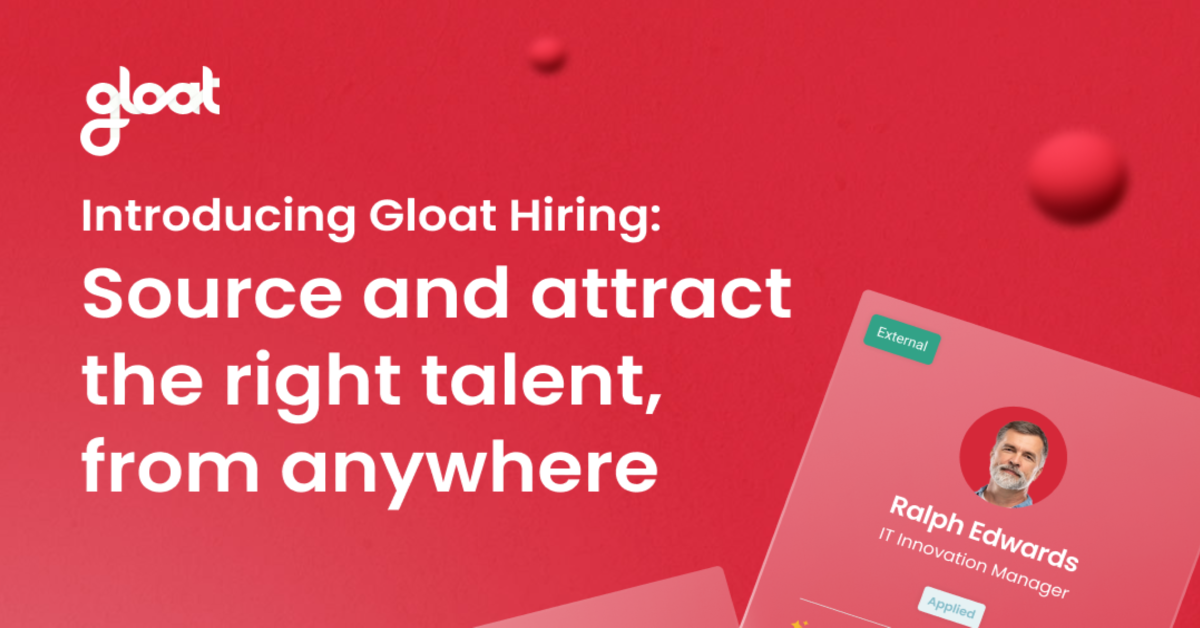How to maximize the impact of your talent development strategy
Why your talent development strategy isn’t working (and what to do instead)

Just a few years ago, some organizations viewed talent development as a nice-to-have employee perk. But when faced with open vacancies or emerging skills needs, leaders turned to external recruitment to bridge the gaps. In today’s prevalent labor shortages and competitive hiring landscape, talent development has become a must-have strategic initiative.
The war for talent requires profound business pivots. Savvy organizations are prioritizing internal mobility and striving to grow the talent they need from within their organization. And while an emphasis on internal growth has the potential to become a winning approach, it only works when companies have a powerful talent development strategy in place.
Yet, many organizations are encountering pitfalls that limit their initiatives’ efficacy and set them up for future talent shortages.
What is a talent development strategy?
A talent development strategy is a series of processes that are designed to motivate, engage, and further develop existing employees. Any program that helps people build new skills and access learning and training opportunities can be considered part of your approach to talent development.
There’s a lot of confusion about talent development and talent management and how these terms intersect. To put it simply, talent development is a big part of talent management. But it’s specifically focused on growth and bridging skills gaps, while talent management includes other components of the employee lifecycle such as hiring and recruiting.
Talent development is getting a lot of attention right now because the half-life of skills is shrinking, knowledge gaps are widening, and external hiring is getting more challenging. Many businesses are rethinking their talent development strategies to improve performance, reduce skills gaps, and retain and engage employees.
What are talent development frameworks?
Once you have a vision for your talent development strategy, the next step is creating talent development frameworks that will give your approach a sense of structure. Since talent development focuses on employees’ skills and learning, development frameworks should outline goals for individual growth and highlight competencies that employees should learn.
Talent development frameworks are often part of larger talent management frameworks that include recruiting and succession planning. Regardless of how you choose to structure your framework, what matters is to factor employee ambitions into the equation. Your people all have different career aspirations, and the best talent development frameworks will align with these ambitions to ensure your business and your workforce grow together.
4 talent development challenges (and how to overcome them)
Now that every business has its sights set on internal mobility, talent development strategies are in need of a serious upgrade. Here are the most common hurdles that are holding initiatives back, and a few suggestions for what you can do instead:
You’re relying on one-sided strategies
Talent development is a two-way street. You want to empower employees to build new skills that will benefit your business. But you also need to think about how these competencies fit into your peoples’ long-term goals so they’re inspired to keep learning.
In the past, aligning business needs and employee ambitions was next to impossible. Leaders needed to map two sets of priorities and search for development opportunities that checked off both criteria. But now that talent marketplaces are rising in popularity, this heavy manual lift is quickly becoming a thing of the past. The two-sided platforms seamlessly align employee ambitions to business needs and generate suggested projects and gigs that will help your people and your organization grow together.
You’re overlooking the role of skills
The best talent development strategies are rooted in skills. They use a skills taxonomy as the foundation to learn what competencies a workforce already has and what knowledge they should develop next. If your strategy isn’t skills-based, there’s a good chance that employees will be building capabilities that won’t help your organization get ahead—or worse, re-learning things they already know.
Since skills needs are dynamic and ever-changing, you can’t address it as an inventory challenge. Instead, talent development strategies should take an agile approach to skill-building that empowers people to learn new competencies as challenges arise.
You’re forgetting about experiential learning
There’s no such thing as passive learning. Reading and watching content can help employees build knowledge, but true expertise requires hands-on experience. Consequently, the best talent development strategies pair a strong L&D curriculum with access to projects, gigs, and mentorships so employees can put the lessons into practice.
That’s why talent marketplaces are so powerful: the platforms match people to relevant opportunities based on the skills they want to learn, taking employee development to the next level.
You’re not democratizing access to opportunities
If your talent development strategy isn’t inclusive, you’re doing your people and your business a big disservice. Every employee should have an equal chance to build new skills and develop competencies that will enable them to move into new roles within your organization.
Traditionally, employees from underrepresented groups haven’t had access to the same breadth of growth opportunities as their colleagues. But recently, leaders have begun turning to talent marketplaces to level the playing field. The platforms suggest opportunities based on employees’ skills, interests, and ambitions, in turn mitigating bias and democratizing career development
Now that every business has turned its attention towards talent development, upgrading your approach needs to be at the top of your priority list.




